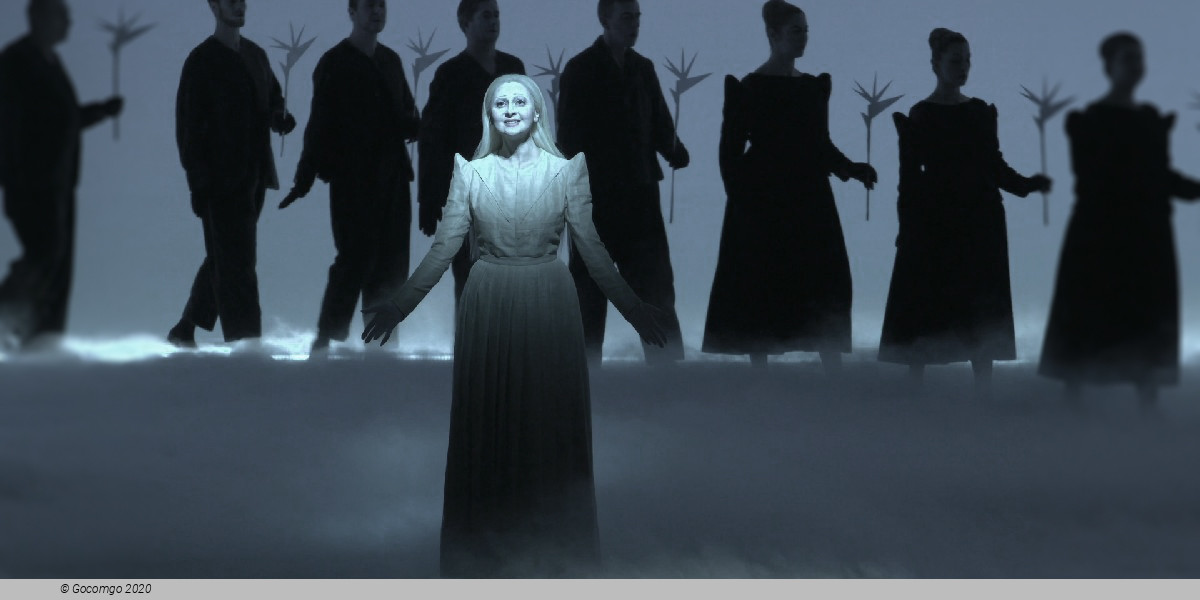Haus für Mozart (Salzburg, Austria)
Haus für Mozart

When it became clear that the ambitious plans to build a festival theater in Hellbrunn could not be realized, the idea of transforming parts of the Hofstallkaserne into a theater hall came to the fore. After only four months of construction, a provisional festival theater was opened in 1925 on the terrain of the Great Winter Riding School with the Salzburg World Theater. Already in 1926 a first reconstruction phase of the insufficient Festspielhaus provisional by Clemens Holzmeister. Adaptations were made again in 1927, and now operas were also presented: Beethoven's Fidelio was performed here in 1927 as the first music theater work.
The later so-called "Small Festspielhaus" experienced numerous other renovation phases: 1937 was the rotation of the auditorium by 180 degrees, making a stage house cultivation was necessary. To accomplish this, Governor Franz Rehrl had his birthplace demolished in Toscaninihof. Benno von Arent redesigned the Festspielhaus in 1939 and replaced the wood paneling with a gilded plaster ceiling. The unfavorable visual and acoustic conditions required a further conversion in the years 1962/63. The Salzburg architects Hans Hofmann and Erich Engels gave the hall the form that it had until 2004.
For many years, the Salzburg Festival pursued the plan to create a "House for Mozart", which takes into account the stage works of the composer in every respect: with optimal acoustics and the best visibility from all seats. With the necessary intimacy of the room but at the same time a sufficient seating capacity had to go along. What seems like a squaring of the circle, the team of architects Holzbauer & Valentiny accomplished: The former Small Festival House was transformed in three phases from September 2003 in a "House for Mozart". The auditorium of the Kleine Festspielhaus was widened, shortened and lowered. Two new auditorium seats were created, which extend to the stage on both sides of the hall. Thus, the effect is achieved that not bare walls, but festive people frame the stage from three sides.
The foyer areas have changed considerably compared to the former Kleines Festspielhaus. High, floor-to-ceiling windows open the view to the cityscape in the main foyer - in return, the brightly lit interior of the theater in the evening looks outward. The main foyer is dominated by a 17-meter-high gilded louvre wall, through whose openings a Mozart's head created from Swarovski crystals can be seen. The terrace in front of the hall building was never open to the public since its construction in 1924. With the new building, it has now become part of the pause foyers. The arcade below was glazed and allows the auditorium to be opened from two sides instead of just one. This is the first time you can step directly from the Festspielhaus into the magnificent city landscape.
The new festival lounge on the roof, the SalzburgKulisse (made possible by the patron Gerhard Andlinger), has become a major attraction: the name itself already hints at the magnificent view that offers itself there to the old town of Salzburg. The furnishings of this lounge are made of pear-clad walls, and the tapestries in the niches are by Anton Kolig and Robin Andersen, two contemporaries of Anton Faistauer.
The Faistauer foyer (made possible by the patron Herbert Batliner) became a jewel of the new building: the famous frescoes of this room, created by the Salzburg painter Anton Faistauer in 1926, were removed after the Nazi invasion, in part wantonly destroyed, and could be reapplied until 1956. For the inauguration of the house for Mozart they were fundamentally restored and the room was also restored architecturally to its historical form.
The Holzmeister ensemble from the years 1924/37 has been preserved in its proportions on the outer façade. The visual impression of the façade is determined by the representative hall exits to the terrace designed by the sculptor Josef Zenzmaier. He created large bronze reliefs that were placed above the portals and depict scenes from Mozart's Le nozze di Figaro, Don Giovanni and The Magic Flute , The stone masks of Jakob Adlhart are now clearly visible in front of the entree of the house: under the new concrete roof with cantilevered gold and cantilevered out. Throughout the house, rough-sprayed concrete surfaces contrast with fine gold leaf and create an aesthetic tension.
From the back stage, a large iron gate opens into the Toscaninihof. The six concrete reliefs "Mask-Holding Genii" attached to the left and right of it were knocked off in 1938, but reconstructed in 1979 by their creator Jakob Adlhart. Above this, an organ is attached, which was recorded before the construction of the Great Festival Hall in the bad weather performances of Everyman.
On the occasion of the celebration of Mozart's 250th birthday in the so-called Mozart Year, the House of Mozart was ceremoniously opened on 26 July 2006 with the premiere of Le nozze di Figaro (directed by Claus Guth, conductor: Nikolaus Harnoncourt).


